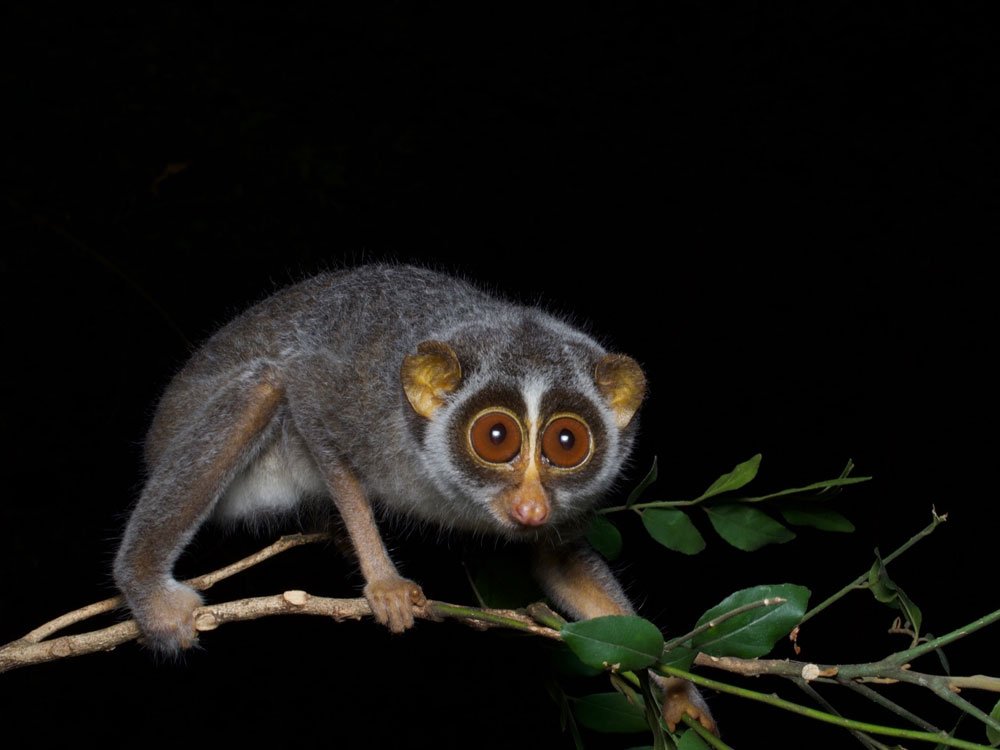
By back of beyond travel
December 27, 2024
Sri Lanka, a lush and vibrant island nation, is home to a myriad of unique wildlife species. Among its most fascinating inhabitants is the gray slender loris (Loris lydekkerianus nordicus), a small, nocturnal primate that captures the imagination with its mysterious and elusive nature. Found primarily in the dense forests and shrublands of Sri Lanka, the gray slender loris plays a crucial role in the island’s rich biodiversity.
Physical Characteristics and Behavior
The gray slender loris is a petite primate, typically weighing between 85 to 350 grams and measuring around 17 to 26 centimeters in length. Unlike some primates, it lacks a tail, and its limbs are long and extremely slim, adaptations that aid in its arboreal lifestyle. Its large, round eyes are specially adapted for nocturnal vision, allowing it to navigate and hunt in the dark. The loris’s grayish or reddish dorsal fur, slender limbs, and elongated fingers and toes make it a nimble climber, adept at moving through the forest canopy.
Primarily insectivorous, the gray slender loris has a diet that includes insects, small vertebrates, fruits, and leaves. Its slow and deliberate movements help it avoid detection by predators and prey alike. This nocturnal primate is known for its distinctive, high-pitched vocalizations, which it uses to communicate with others in its social group.
Habitat and Distribution
The gray slender loris inhabits eastern and southern India and Sri Lanka. Within this range, each subspecies occupies different areas. In Sri Lanka, the dry zone slender loris (Loris lydekkerianus nordicus) is found in the north-central dry areas, while the highland slender loris (Loris lydekkerianus grandis) resides in the central province. These primates thrive in both primary and secondary forests, as well as in some agricultural areas, where dense foliage provides the necessary cover for their nocturnal lifestyle.
Conservation Status
The gray slender loris is currently listed as “Near Threatened” on the International Union for Conservation of Nature (IUCN) Red List. Despite its elusive nature, studies have shown that populations are declining, primarily due to habitat loss and fragmentation. Conservation efforts are underway to protect and restore its natural habitats, including the establishment of protected areas and wildlife corridors. Local and international conservation organizations are also working to raise awareness about the gray slender loris and its ecological importance. Initiatives include community education programs, research on population dynamics, and efforts to mitigate human-wildlife conflicts.
The Importance of the Gray Slender Loris
The gray slender loris plays a vital role in maintaining the ecological balance of Sri Lanka’s forests. As both predator and prey, it helps control insect populations and serves as a food source for larger predators. Its presence indicates a healthy, functioning ecosystem, making it a key species for conservation efforts.
Conclusion
The gray slender loris is a captivating and essential part of Sri Lanka’s natural heritage. Its survival is intertwined with the health of the island’s forests, highlighting the need for continued conservation efforts. By protecting the gray slender loris and its habitat, we not only preserve a unique and enchanting species but also safeguard the rich biodiversity that makes Sri Lanka’s ecosystems so remarkable.
